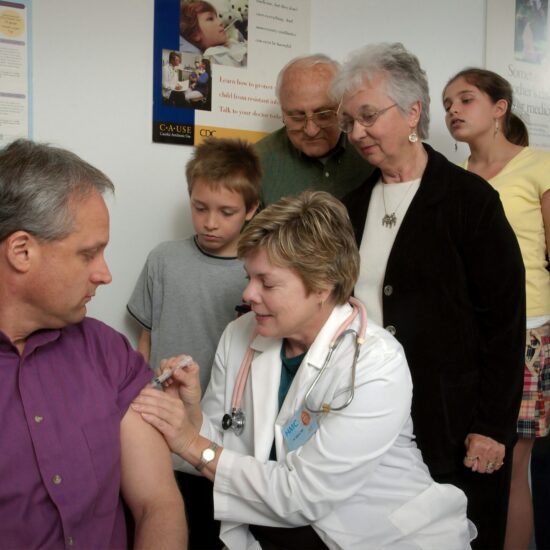William M. Silberg, is a strategic publishing and communications consultant with 30 years experience in health, medicine, health policy and science, in both the professional and consumer sectors.
A recent paper in the American Journal of Preventive Medicine (disclosure: I’m AJPM’s Editor-at-Large) offers some sobering data relevant to any health professional trying to make sense of clinical guidelines and, more importantly, help patients and the public with that plaintive question – “so what should I do?” Further, it’s a powerful example of what happens when health, media and policy, um, “collide.”
The paper, by Linda B. Squiers, PhD, and colleagues at RTI International, looked at media coverage and sampled public understanding of the November 2009 release of new mammography guidelines by the US Preventive Services Task Force (USPSTF), an independent panel of experts in primary care and prevention. The new guidelines, which update those the Task Force issued in 2002, recommended against routine mammography for women prior to age 50 and suggested that screening end at age 74. They also recommend changing the screening interval from one to two years and suggested that women aged 40 to 49 who are at high risk for breast cancer consult with their clinician about the optimal time to begin regular, biennial screening mammography.
The bottom line: many women told the RTI researchers in a web-based survey that they were confused by the new guidelines. Those confused most? Women aged 40-49 and those who’d never had a mammogram or had one more than two years ago.
This isn’t surprising, for a range reasons. First, the new recommendations didn’t match those from such organizations as the American Cancer Society and American College of Radiology, both of which criticized the USPSTF release. Other organizations, however, praised the new guidelines. And as it happened, the recommendations were released during the heat of the national health reform debate, making them a natural lightning rod for those arguing that reform would lead to government-sanctioned rationing of care (although economics were not part of the USPSTF analysis).
As you might expect, the debate played out in a flurry of media coverage, an analysis of which was part of the RTI study. Of 233 newspaper articles and social media posts analyzed, about 52% were unsupportive of the news guidelines and about 18% supportive, the researchers found. The most common reasons mentioned for being unsupportive – the belief that delaying screening would lead to later detection of more advanced breast cancer and thus more cancer deaths, and the belief that the recommendations reflected government rationing of healthcare. Indeed, the researchers note, there could be a media bias in favor of mammography generally, possibly reflecting “the strong historical influence of breast cancer advocacy efforts.”
Whether that last point is indeed true, it’s understandable that overall, the release of the new recommendations wound up confusing many women more than they helped them understand when to get a mammogram. RTI found that only 23% of those sampled correctly identifying the mammography recommendation for women aged 40–49. This is especially unfortunate given that the USPSTF has a long history of applying rigorous science in crafting its guidelines and that many of the recommendations it makes are not only widely followed by health professionals but generally released without much debate.
The controversy that greeted the updated mammography guidelines exemplifies the challenge that groups like the USPSTF face in promoting clinical recommendations that don’t necessarily support regular screening, the study concludes (and, I’d add, that don’t mesh with “conventional wisdom” and/or messaging from other authoritative professional sources).
So what to do? The RTI researchers have recommendations of their own, suggesting that routine use of “message testing” could ensure that future guidelines are “understandable, credible, and use language that resonates with the target audience.” This is especially important since guidelines can use terms – “routine,” “against” – that might be sources of confusion or concern for key audiences.
In other words – in my view, anyway – clinical guidelines, in addition to following the basic principles of high-quality science and evidence, also should be crafted and disseminated with an eye on the basics of strategic communication generally and health communication in particular.
It also, in my view, would be wise to be exquisitely aware of the political and economic issues that increasingly play out in the worlds of health policy and practice, especially if we are to have a shred of hope of more widely adopting evidence- and effectiveness-based medicine and health care. Former Medicare/Medicaid chief Gail Wilensky made that argument in a thoughtful Health Affairs blog post more than a year ago. It’s even more true today.









Pingback: A case study in the intersection between health, media and policy « Communications for fun and (non)profit(s) / May 14, 2011
/
meg / May 16, 2011
Thanks for this excellent anatomy of good science/bad press. As expensive and as hard as it is to do good research, it is tragic when important findings are lost in jargon or misleading soundbites. In the end, public health science is only as good as it is written. And that’s the ounce of prevention, preventative health advocates must take. The message is the medicine.
/